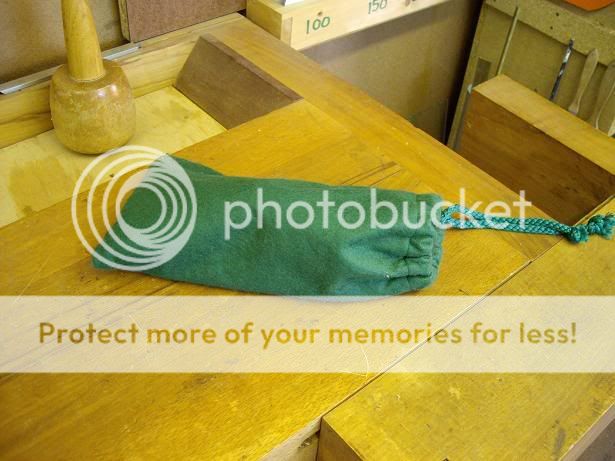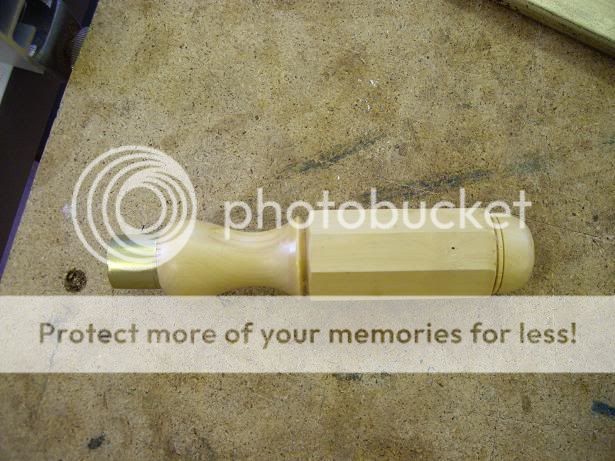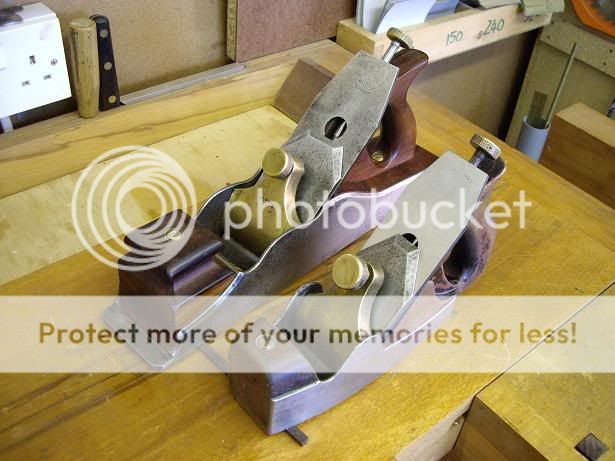woodbloke
Established Member
Rod (Harbo) has been round this morning for a good old natter about planes and all sorts of other stuff.....saws, chisels, knives etc. But what do you think is in this little bag?

He brought an interesting handle in box from Ray Isles, best London octagonal pattern similar to the ones that Alf made some time back. I'm going to copy this design for a fish tailed chisel (cleaning out the bottom of dovetail sockets) with a handle in ebony, so it should be quite good:

Rod had also bought round his Norris smoother fitted with a Ray Isles blade which was very pleasant to use as well as a Norris jack (15") where the sole had been milled and a new rosewood infill fitted, again very pleasant to use:

But what was in the little green bag? This is where I turned a distinct shade of puce, 'cos it was this..........
.
.
.
.
.
.
.
.
.
.
.
.

Fabulous, no need to say any more really........just going to have a good sulk :mrgreen: in a corner somewhere - Rob

He brought an interesting handle in box from Ray Isles, best London octagonal pattern similar to the ones that Alf made some time back. I'm going to copy this design for a fish tailed chisel (cleaning out the bottom of dovetail sockets) with a handle in ebony, so it should be quite good:

Rod had also bought round his Norris smoother fitted with a Ray Isles blade which was very pleasant to use as well as a Norris jack (15") where the sole had been milled and a new rosewood infill fitted, again very pleasant to use:

But what was in the little green bag? This is where I turned a distinct shade of puce, 'cos it was this..........
.
.
.
.
.
.
.
.
.
.
.
.

Fabulous, no need to say any more really........just going to have a good sulk :mrgreen: in a corner somewhere - Rob

































